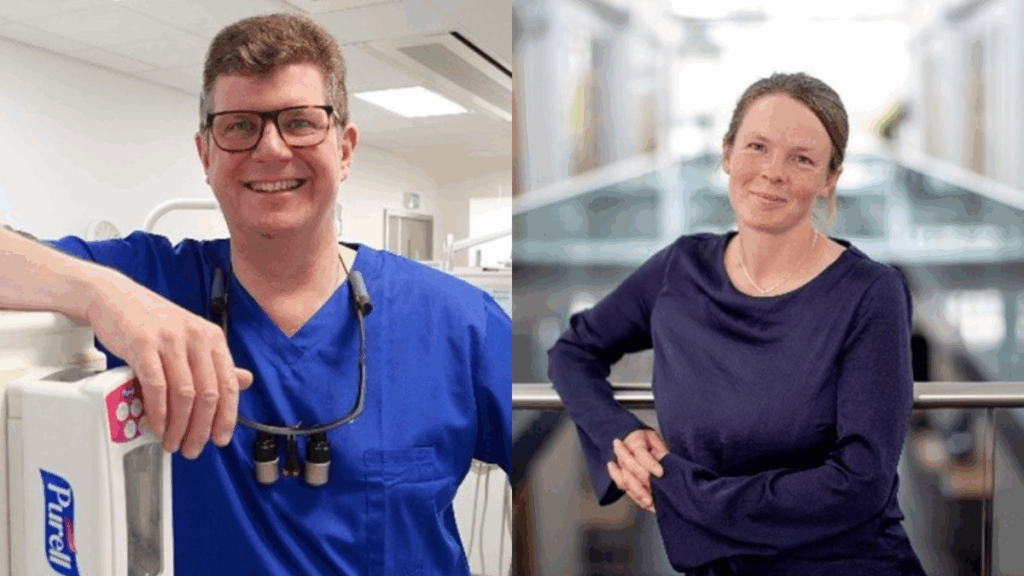As members of the editorial team responsible for the recent revision of Standards in Dentistry, Professor Christopher Tredwin FCGDent, Dean of Queen Mary University of London Institute of Dentistry and Lorna Burns, Lecturer in evidence-based healthcare at the University of Plymouth, introduce the updated guidance.
The third edition of Standards in Dentistry has been published and is now available to view online. Members of the College can also download and save it to their desktop or other devices.
The editorial team tasked with updating the guidance was led by Ewen McColl FCGDent, Professor of Clinical Dentistry and Head of Peninsula Dental School at the University of Plymouth, and included Chris Tredwin FCGDent, Professor of Restorative Dentistry, Dean and Director of Queen Mary University of London Institute of Dentistry; Robert Witton FCGDent, Professor of Community Dentistry at Peninsula Dental School and Chief Executive of Peninsula Dental Social Enterprise CIC; Lorna Burns, Information Specialist at Peninsula Dental School and lecturer in evidence-based healthcare at the University of Plymouth; and general dental practitioners Nicola Gore FCGDent and Susan Nelson MCGDent. The team also worked closely with Abhi Pal FCGDent, then President, now Immediate Past President of the College.
The fully revised edition incorporates new and updated guidelines and standards which are appropriate for the whole primary care dental team. It follows the structure of the previous two editions, and contains two main sections: summary tables of clinical standards, and lists of guidelines, arranged topically by area of care. The publication does not intend to imply that patients should receive identical care.
Guidelines provide recommendations for effective practice in the management of clinical conditions where variations in practice occur and where effective care may not be delivered uniformly.
Clinical standards are used to describe the specific elements of care that need to be correct in order to optimise the outcomes for patients. Standards must be unambiguous and measurable.
The clinical standards tables are presented as A: Aspirational, B: Basic and C: Conditional. The A,B,C clinical standards are process measures, not outcomes.
- Aspirational – gold-level standards which are not essential
- Basic – minimum standard necessary to ensure patient safety
- Conditional – these recommendations only apply in particular situations
Clinicians can use the aspirational standards to improve their practice whilst ensuring that basic standards are met. However, clinicians must assess each clinical situation, the circumstances and the evidence available to them, and use their clinical judgement to settle on the course of action which is in the patient’s best interests. It is recommended that clinicians explain the choices to the patient, the reasons for recommending the chosen course of action and then seek the patient’s consent before clearly justifying the reasoning and recording the consent in the patient’s records.
The editorial team drew the summaries of clinical standards from multiple, authoritative sources of guidance for primary care dentistry. All of the summary tables have been reviewed and updated for this edition, and revisions were peer-reviewed in consultation with representatives from across the UK dental sector.
There are new summary tables for Digital Dentistry and Aesthetic Dentistry, reflecting changes in dental care. The newly incorporated standards for Digital Dentistry recognise that dental practices are at different stages of implementing full digital workflows. Therefore, the basic standards in this table refer to the legal necessities such as meeting GDPR requirements and maintaining secure electronic systems. However, in recognition that practices will be working towards the aspirational goal of full clinical digital workflow, there is also a basic standard for members of the dental team to develop the skills and knowledge to enable the transition.
The new standards for Aesthetic Dentistry are aligned with the legal position decided by the GDC in light of the High Court ruling in the case of GDC v Jamous. Tooth whitening treatment is the practice of dentistry and can only legally and safely be carried out by registered dental professionals. The basic standards for Aesthetic Dentistry highlight the importance of communications with patients, including discussion of risks and managing expectations. There is also clear emphasis on the responsibilities of the dental care professional to act within their scope of practice, competence and training.
The new 2025 edition of Standards in Dentistry is designed for the busy practitioner as a chairside guide which compiles guidelines from multiple bodies, covering all aspects of clinical care from diagnosis to treatment.
In updating this publication, the editorial team reviewed and updated summaries of the guidelines of more than twenty, mostly UK guideline-producing bodies such as the College of General Dentistry, Scottish Dental Clinical Effectiveness Programme, British Endodontic Society, British Orthodontic Society, British Society of Paediatric Dentistry, British Society of Periodontology and Implant Dentistry, and Royal College of Surgeons Faculty of Dental Surgery.
This comprehensive guidance for all members of the oral healthcare team, plays an essential role in maintaining standards of excellence within general dentistry, and supports practitioners to continue providing high standards of care to their patients.
The third edition of the Standards in Dentistry is available to view online. To gain access you must be signed in as a College Member or as a free College Subscriber. Members of the College can also download it to their devices as a PDF for personal use, giving access to search, text-select and print functionality.
